This weekend, some of Europe’s hottest rivals will face off against one another. FC Bayern will host Borussia Dortmund in the German Bundesliga’s ‘Der Klassiker’, Dinamo Zagreb will travel to Hajduk Split in Croatia’s top-flight, and in France, a new chapter will be written in what’s probably the most intensely contested and prestigious rivalry in Ligue 1, as league leaders PSG travel south to take on Marseille in ‘Le Classique’.
There’s not much up for grabs in terms of league position, with Les Parisiens sitting 12 points clear of second-placed Brest and Marseille in the midst of a lacklustre campaign that currently sees them positioned seventh, seven points away from third-placed Lille.
Still, as with any derby game, form can go out the window for 90 minutes when big rivals meet as the opportunity to secure bragging rights and a notable victory over an old foe becomes paramount for players and fans alike.
This tactical analysis piece will provide some analysis of where Marseille must look to hurt PSG in Sunday’s game if they are to stand a chance of getting anything from this game. While Luis Enrique’s side has been the best in France’s top flight this term, they haven’t been infallible, especially in recent weeks when they’ve dropped points against Reims, Monaco and Rennes.
So, what have teams been exploiting against PSG? And where must Les Phoceens focus their preparation efforts to maximise their chances of securing at least a point? Let’s check it out.
Marseille must be organised and focused on defending the space behind their backline
In their recent 0-0 draw with Monaco, Les Monégasques provided some excellent examples of how to defend against PSG in all phases of out-of-possession play.
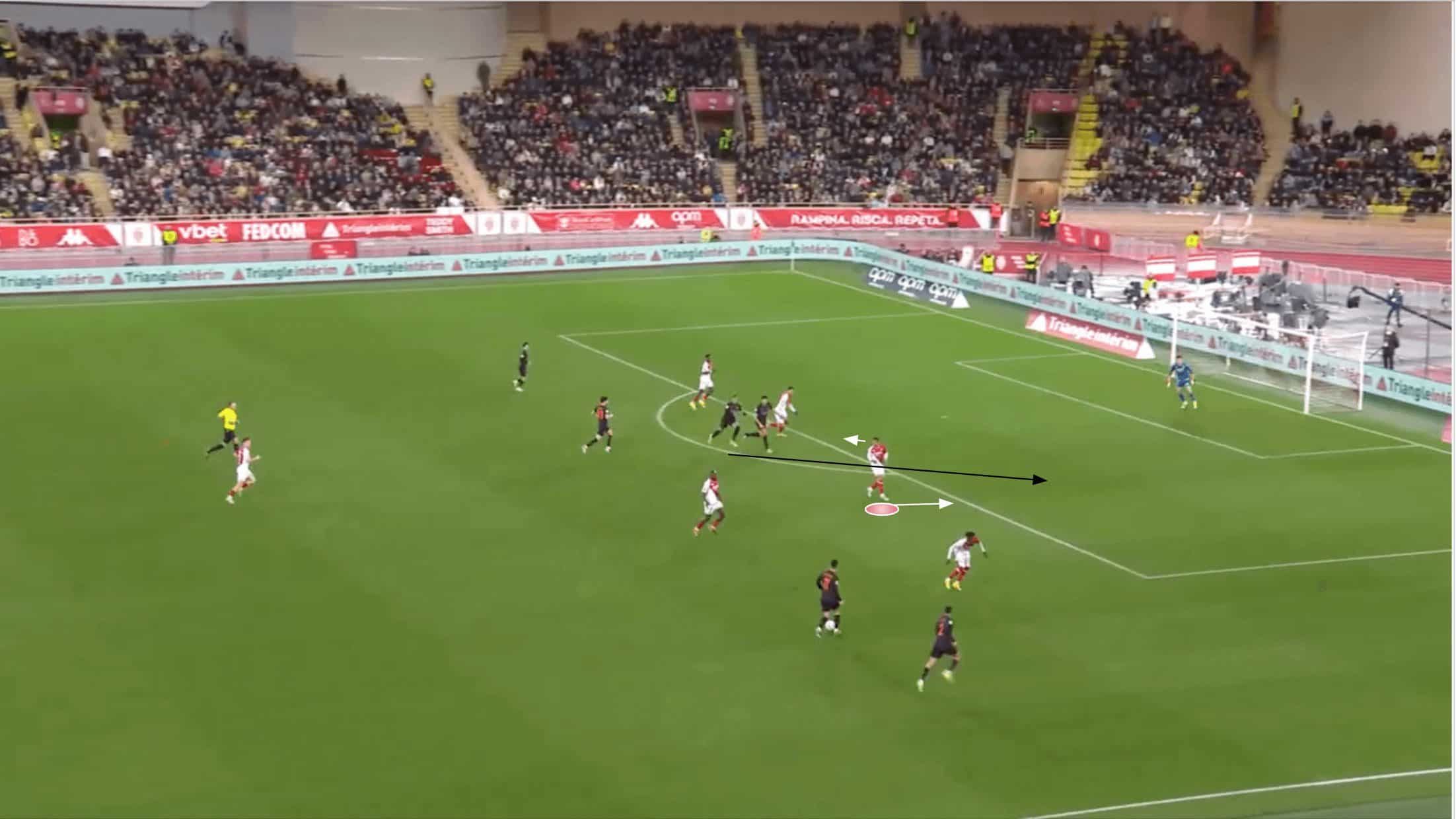
This included their low block defence, when they notably had to deal with Kylian Mbappé’s threatening runs in behind and the line-splitting passes that the likes of Marco Asensio, as we see in figure 1, constantly aimed to thread through.
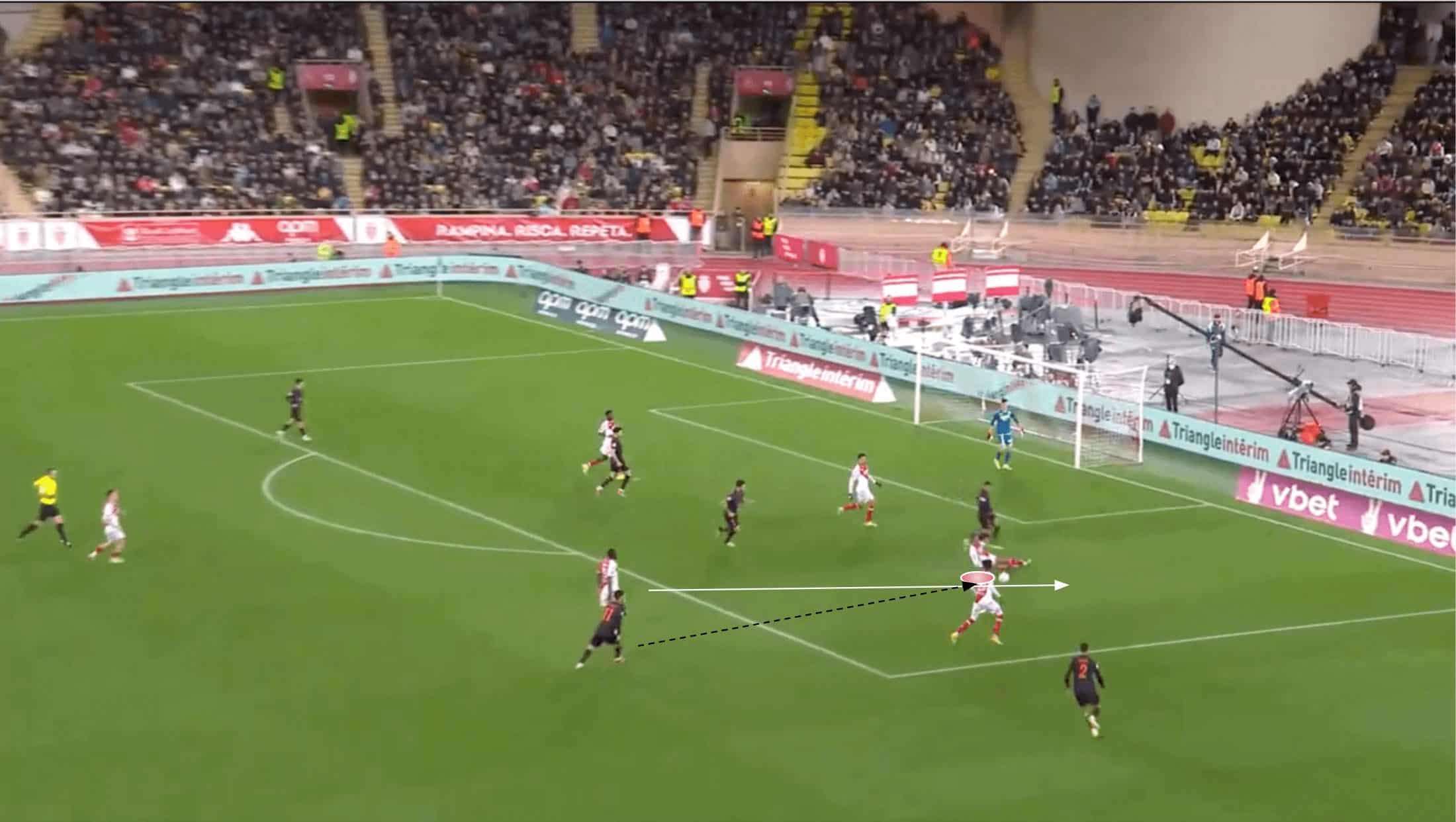
Kehrer, like the rest of Monaco’s clean sheet-keeping defence in this fixture, did a fantastic job of keeping Mbappé quiet, denying him opportunities to receive in behind. In this case, Kehrer pulled off an exquisite interception thanks to his intelligent side-on body positioning in combination with his eagle-like focus on the PSG forward’s run — this provides a perfect example of how to defend against these types of runs in behind and cut the through pass out.
There were plenty of examples of Monaco dealing well with the threat of Mbappé throughout this game — they didn’t provide a lot of examples of how to defend against him 1v1 or as a dribbler rather, they showed some brilliant demonstrations of how to control him and prevent his involvement as much as possible, limiting his touches in advanced areas significantly, as figure 3 below displays.
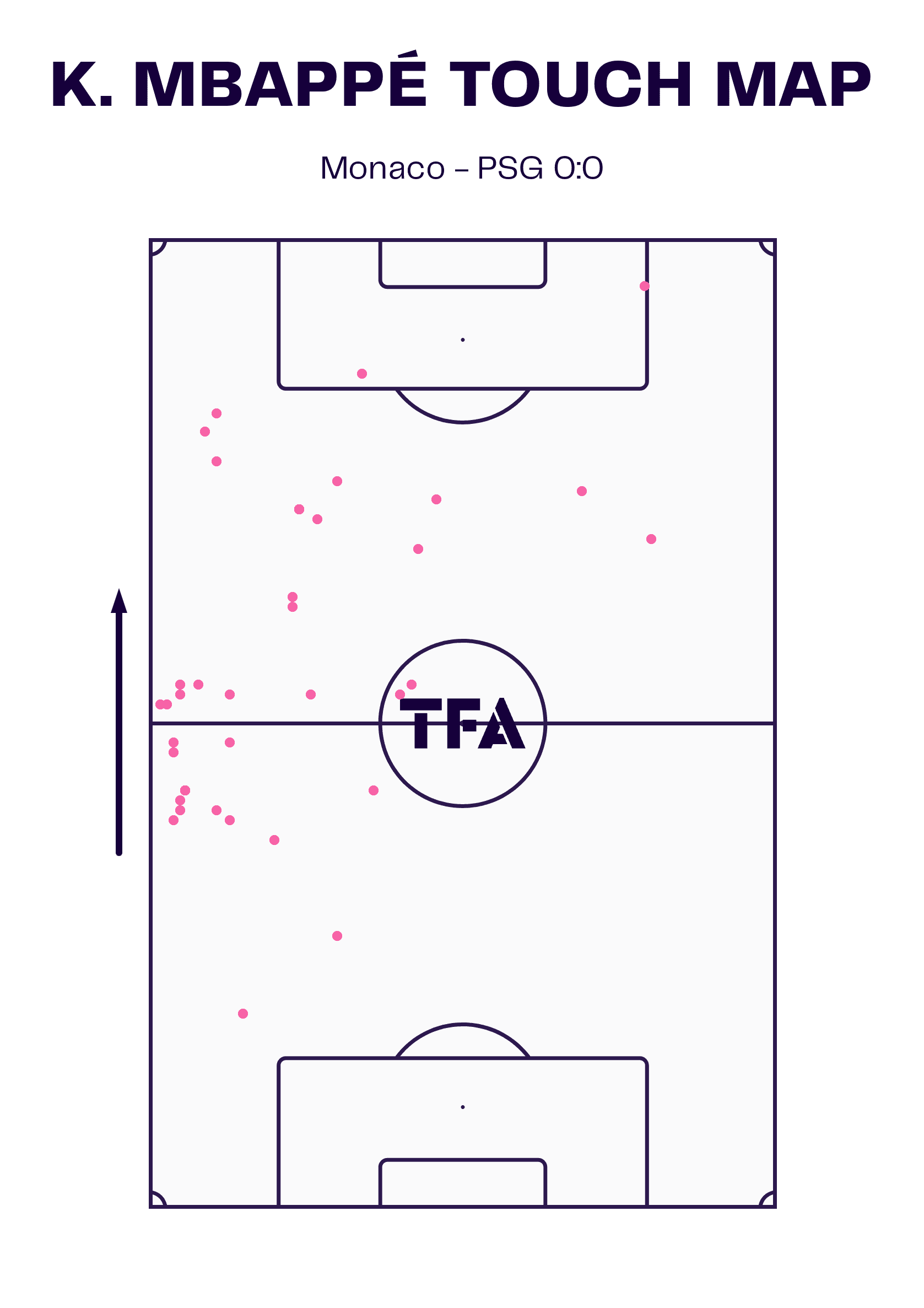
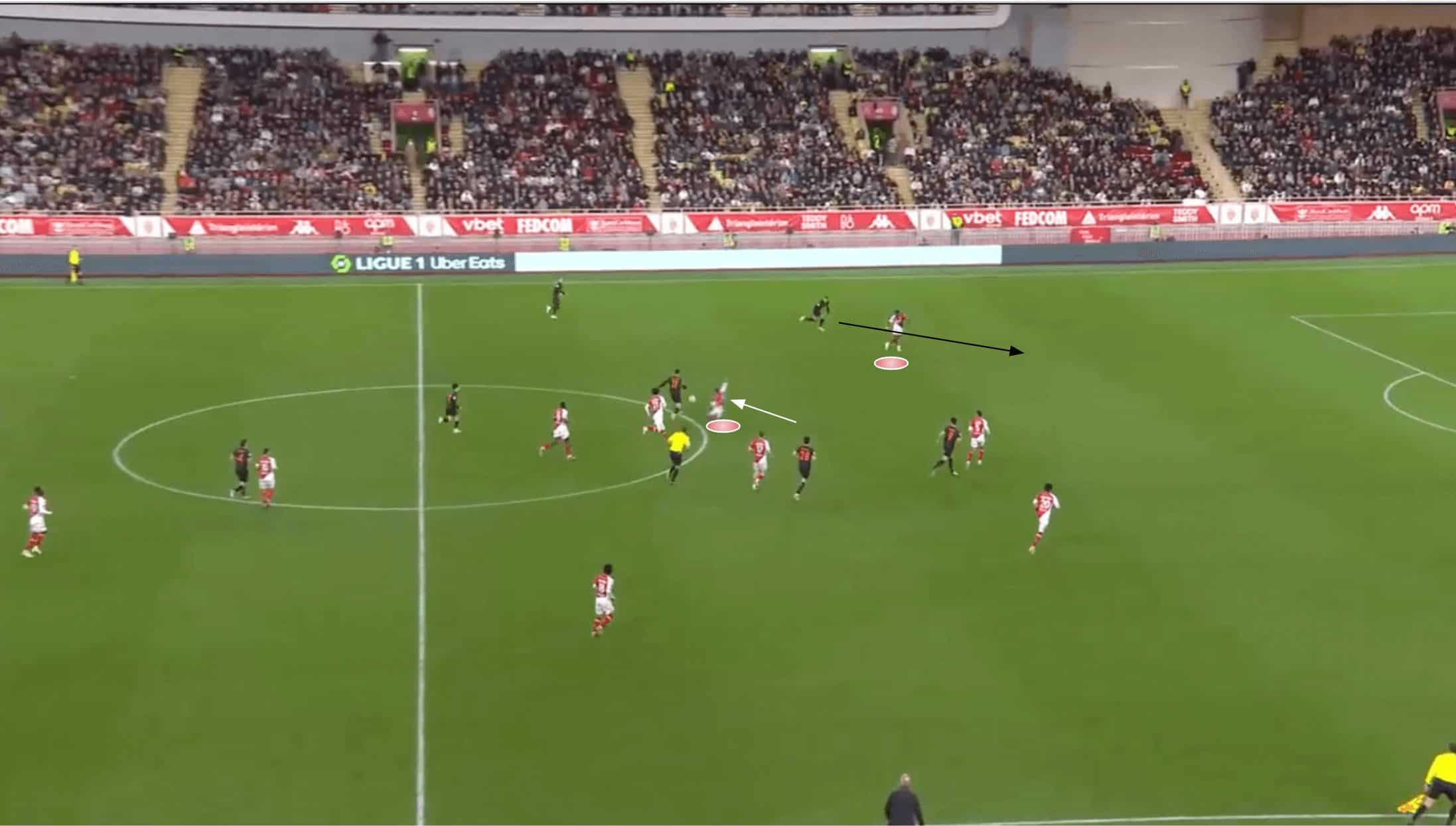
Next up, take a look at figures 4 and 5, which provide yet another example of Monaco excellently controlling the passing lane to Mbappé. While right-back Wilfried Singo positioned himself to deal with the through ball should it make it through, Monaco’s midfielders also pile intense pressure on the ball carrier, Asensio.
The result of Guillermo Maripán’s aggressive movement out from the backline to close down Asensio is that the pass is deflected, allowing Singo to burst forward, regain possession for Monaco and start a counterattack, again denying Mbappé the chance to get involved.
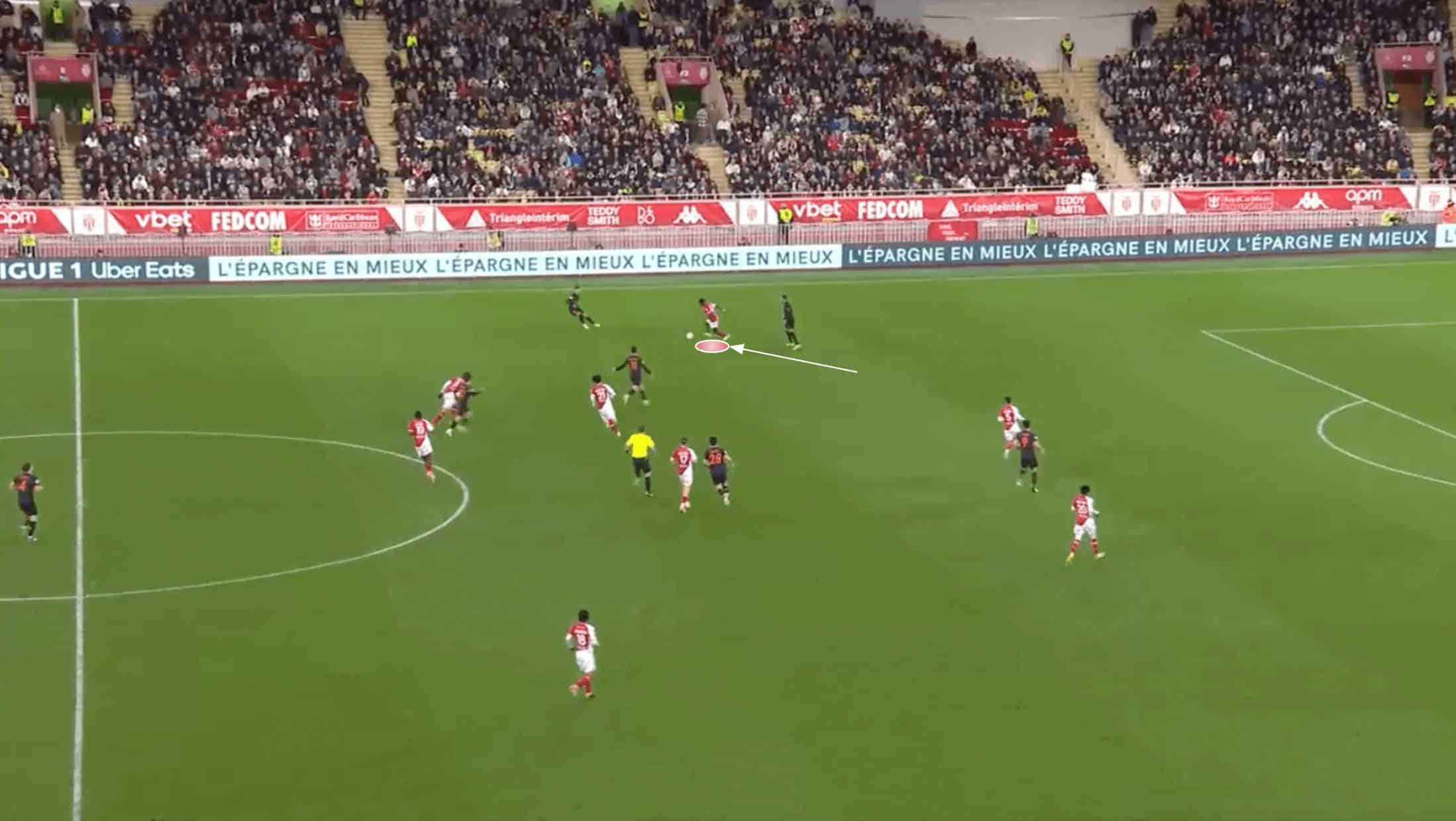
Even when defending a threatening PSG counterattack with fewer bodies back to contribute, Monaco held their ground and dealt well with the obvious threat they pose in transition.
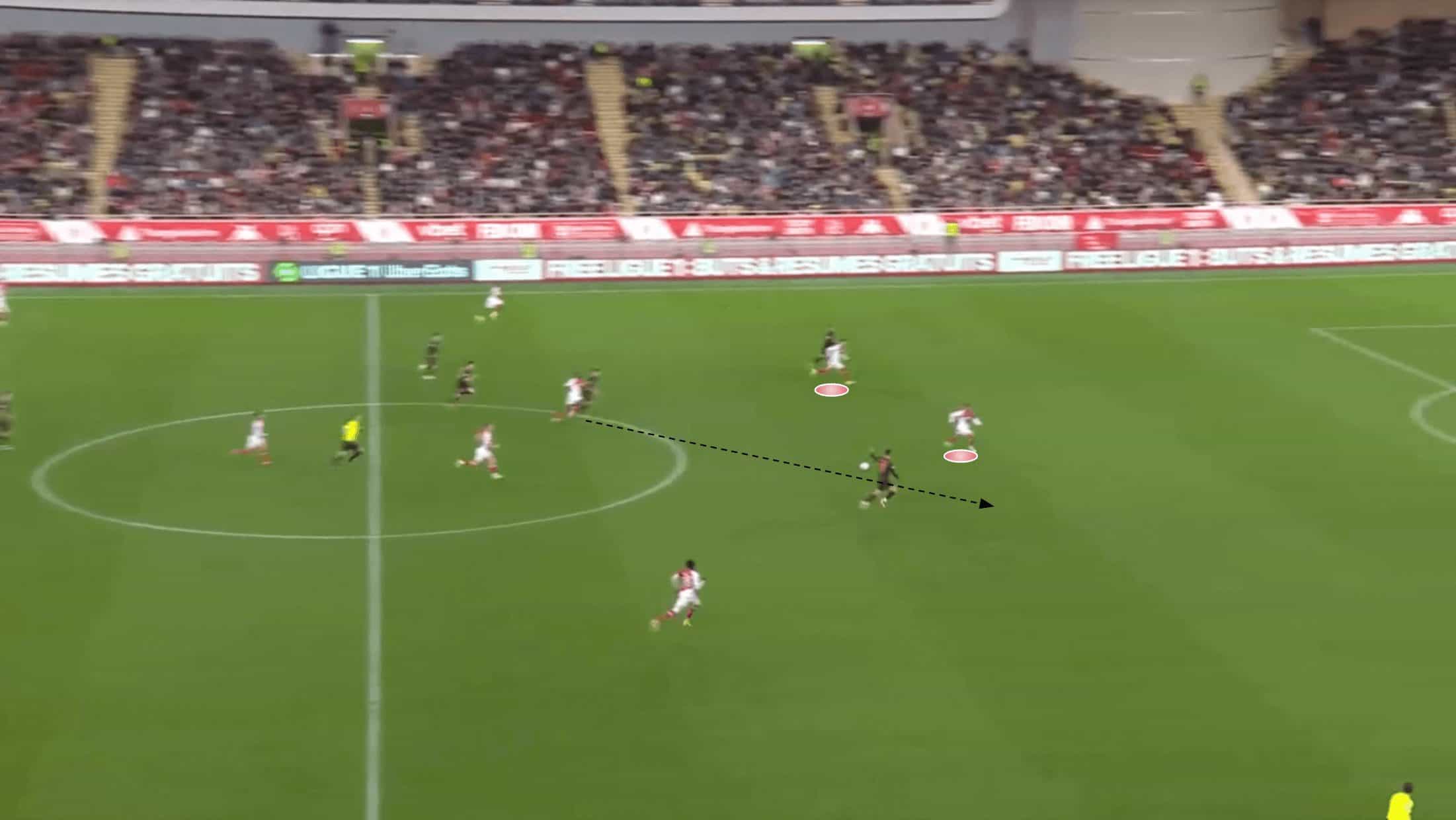
After clumsily losing the ball in midfield, Monaco are now in big trouble as Asensio receives in transition, with Mbappé as a passing option to his left and just two Monaco defenders in place to try and stop them.
The first thing the Monaco defenders do well is react calmly and quickly, backtracking slightly, maintaining a good side-on body shape so they can see the ball and runs while being prepared to turn smoothly should the ball get played behind them.
Doing these basics right, first and foremost, buys them some time to get their bodies back and forces Asensio to think more about his next move.
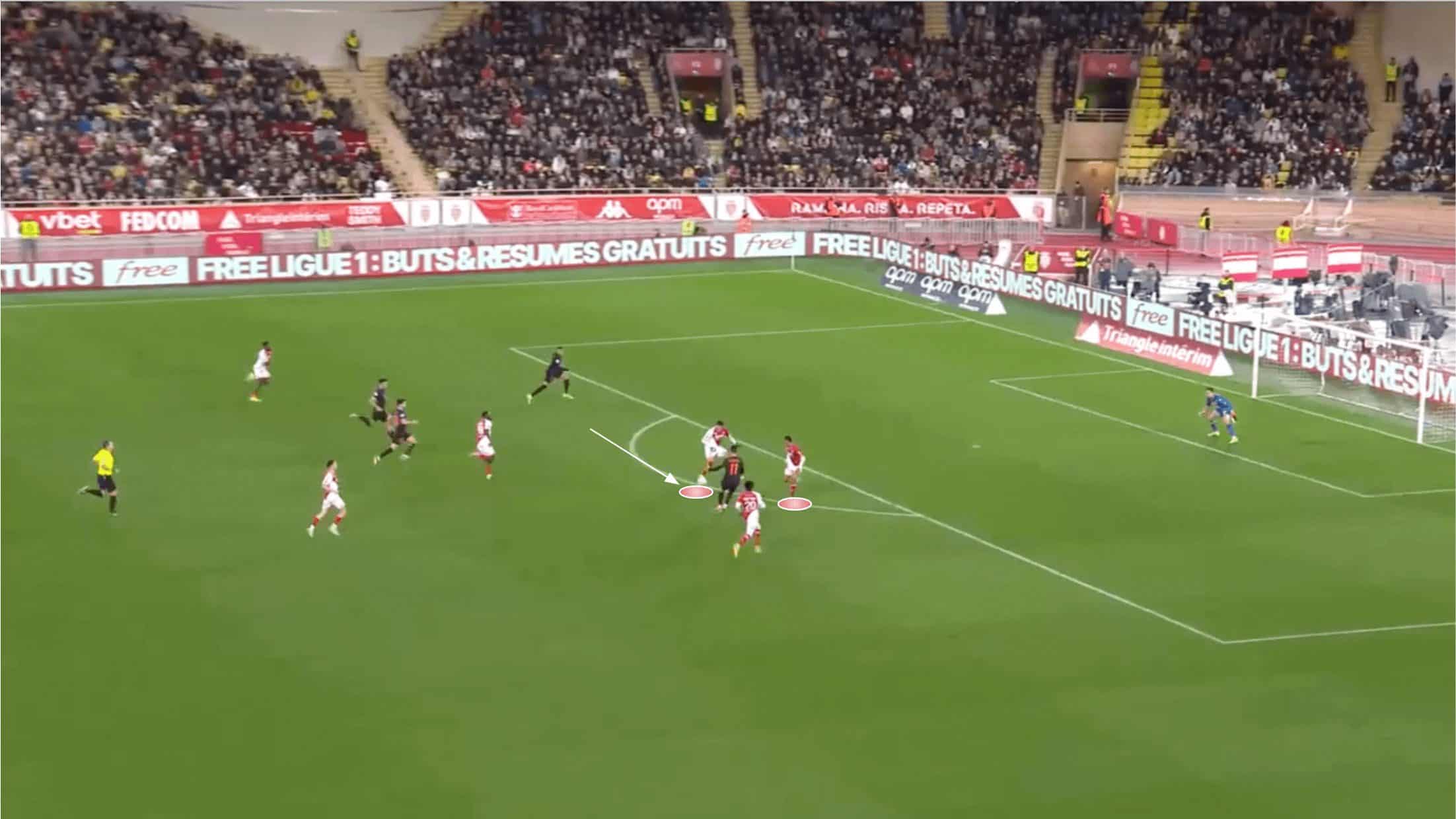
Kehrer stalls Asensio enough via his intelligent body positioning that he buys enough time for Maripán to slide across and double up on Asensio while still blocking the passing lane to Mbappé. This was a big risk from Maripán, as he effectively desserts Mbappé, freeing the star man up should the pass become available. However, the risk paid off as now Asensio was essentially crowded out of the game, surrounded by Monaco shirts and unable to retain possession, let alone play it forward.
Monaco were very well organised and prepared for what they had to do in the low block, mid block and transition to defence when it came to protecting the space behind their backline and denying Mbappé the chance to get involved. This wasn’t a man-marking job; it was a collective effort with everyone knowing what they were required to do to limit PSG’s opportunities, especially in terms of getting in behind where Mbappé is so lethal with his pace and finishing quality.
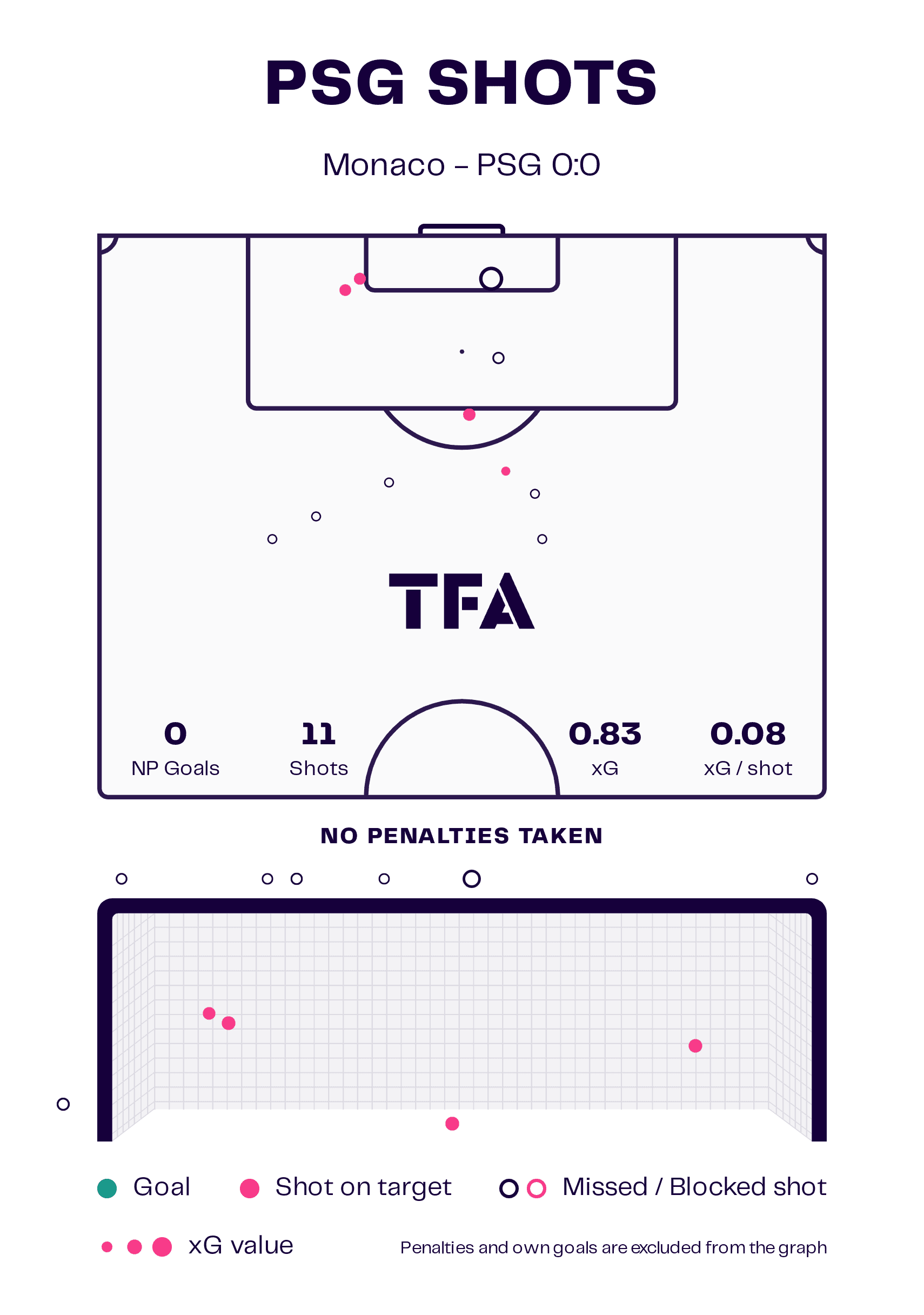
The result of this hard work and preparation was the PSG shot map you see above — just 11 shots, well below their Ligue 1 season average of 14.46 per 90, and an xG of 0.83, also significantly lower than their 2023/24 average in the league of 2.02 per 90.
Marseille must bring pressing intensity
Another tool that Monaco, Reims and Rennes certainly showed is effective at shaking this PSG side is pressing intensity.
Rennes (113), Monaco (107) and Reims (104) all forced PSG into a higher number of losses than their season average in Ligue 1 of 98.35. Their pressing intensity played a significant role in this — and that’s not to focus on line height so much as it is to focus on how their players quickly closed down PSG players’ space, denying them time on the ball and forcing them either into rushed decisions or to simply get caught in possession.
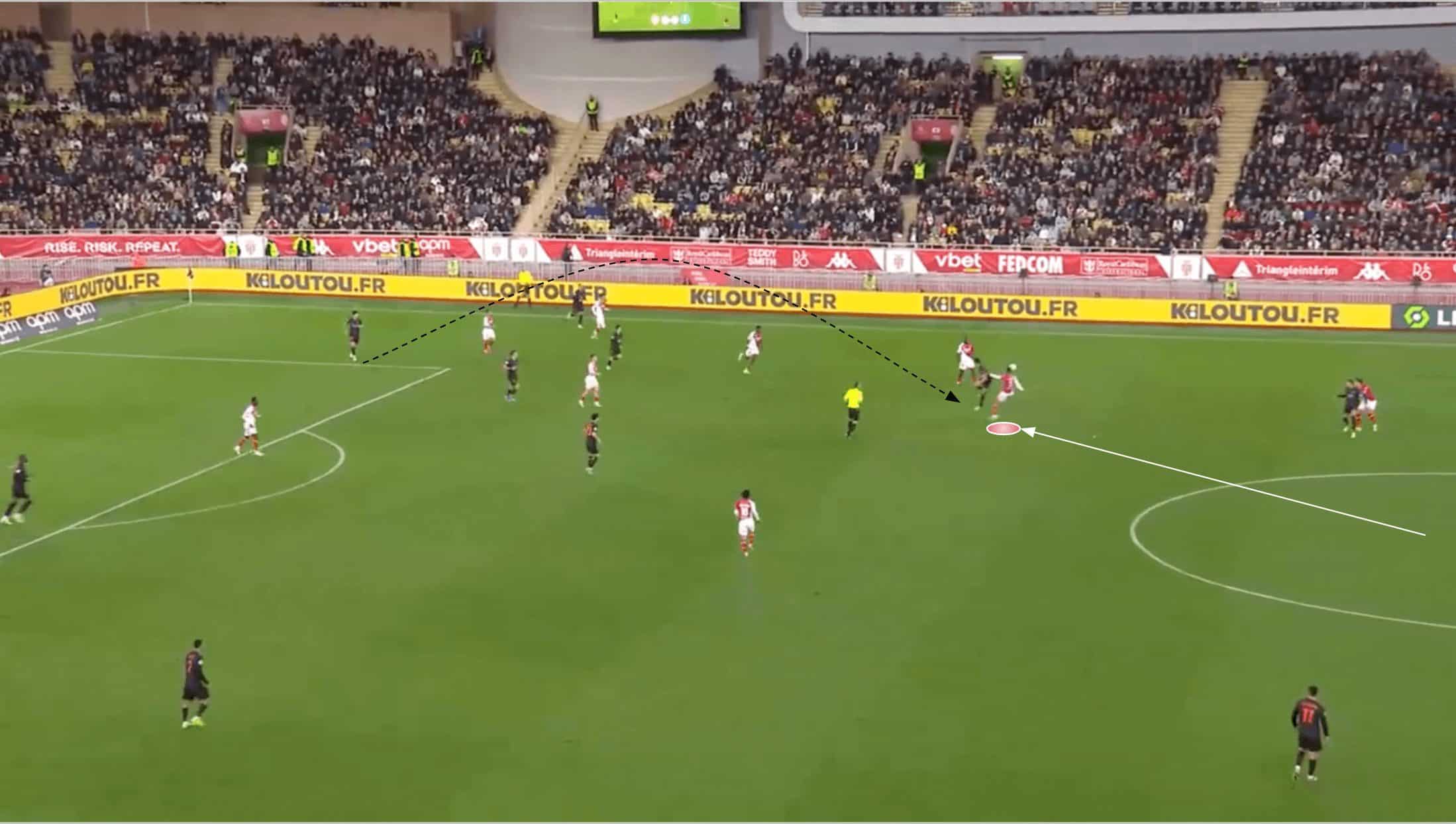
For instance, the image above shows an example of how Monaco pressed high and marked the PSG passing options tightly. This denied Les Parisiens easy passing options out of the back, forcing them to go for a slightly riskier option — playing it a little longer to number 9, Gonçalo Ramos, who saw his team struggling to progress from the backline and dropped to help out.
Ramos didn’t like being followed from deep by Monaco’s centre-back, Kehrer, however. The Monaco defender stuck with the PSG forward as he dropped off into midfield. He did well in the physical battle against the striker, which prevented him from turning on the ball.
This is an area Ramos must improve his game as more centre-backs will do this and stick tight as he drops to receive to feet, meaning the forward has to develop his physical game to deal with this and make it so that defenders feel they can’t stick too tight to him.
In this case, Kehrer forced a turnover inside PSG’s half, allowing Monaco to mount pressure with the ball.
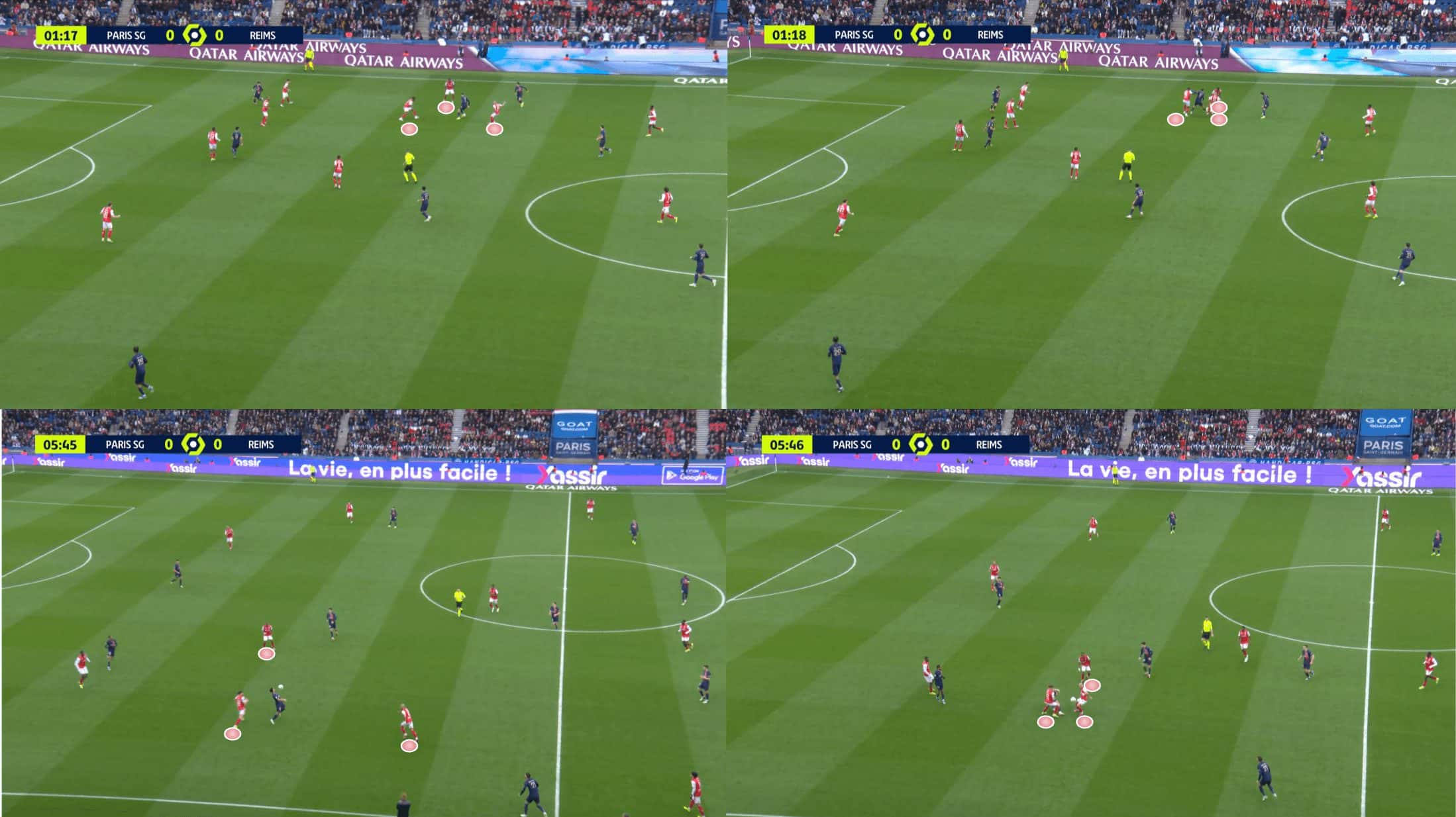
When PSG faced Reims recently and drew 2-2, Reims’ defensive organisation and intensity in the middle third proved crucial to forcing turnovers, denying PSG more chances and creating counterattacking opportunities.
In both of the examples above, it was the spacing and close positioning of the Reims midfielders to each other, as well as the PSG receiver, that allowed them to constantly cage and close in on the opposition players as they received in the middle third of the pitch.
By doing so, they negated the PSG players’ 1v1 ability, as they always had several Reims bodies to deal with when receiving in such situations.
Once more, training ground organisation resulted here in an effective collective effort to deny PSG time and space on the ball.
Marseille must enter Sunday’s derby game with a similar level of belief in the idea that their off-the-ball work rate can play a vital role in getting something from the contest, as Monaco, Reims, and Rennes have all shown it can from their respective draws with Les Parisiens; they must similarly be organised and energised to carry out clear instructions that Jean-Louis Gasset will have prepared to give his team the best possible chance of success.
This level of defensive organisation, tight spacing, and players all knowing their individual roles within this collective well will give Marseille a chance of a result.
Furthermore, it’s important Marseille remember not to sink back onto the edge of their box but be brave enough to press with intensity, taking the game to PSG, trying to make it difficult for them in the middle third — this is where teams have found an edge against Luis Enrique’s side in recent weeks.
Marseille can thrive off early balls into the box to test the PSG defence
Lastly, teams have highlighted some weaknesses in PSG’s backline in recent weeks, which will be analysed in our third section. We’ll start with Reims, who demonstrated a lot of bravery and intelligence in possession against PSG to their ultimate benefit.
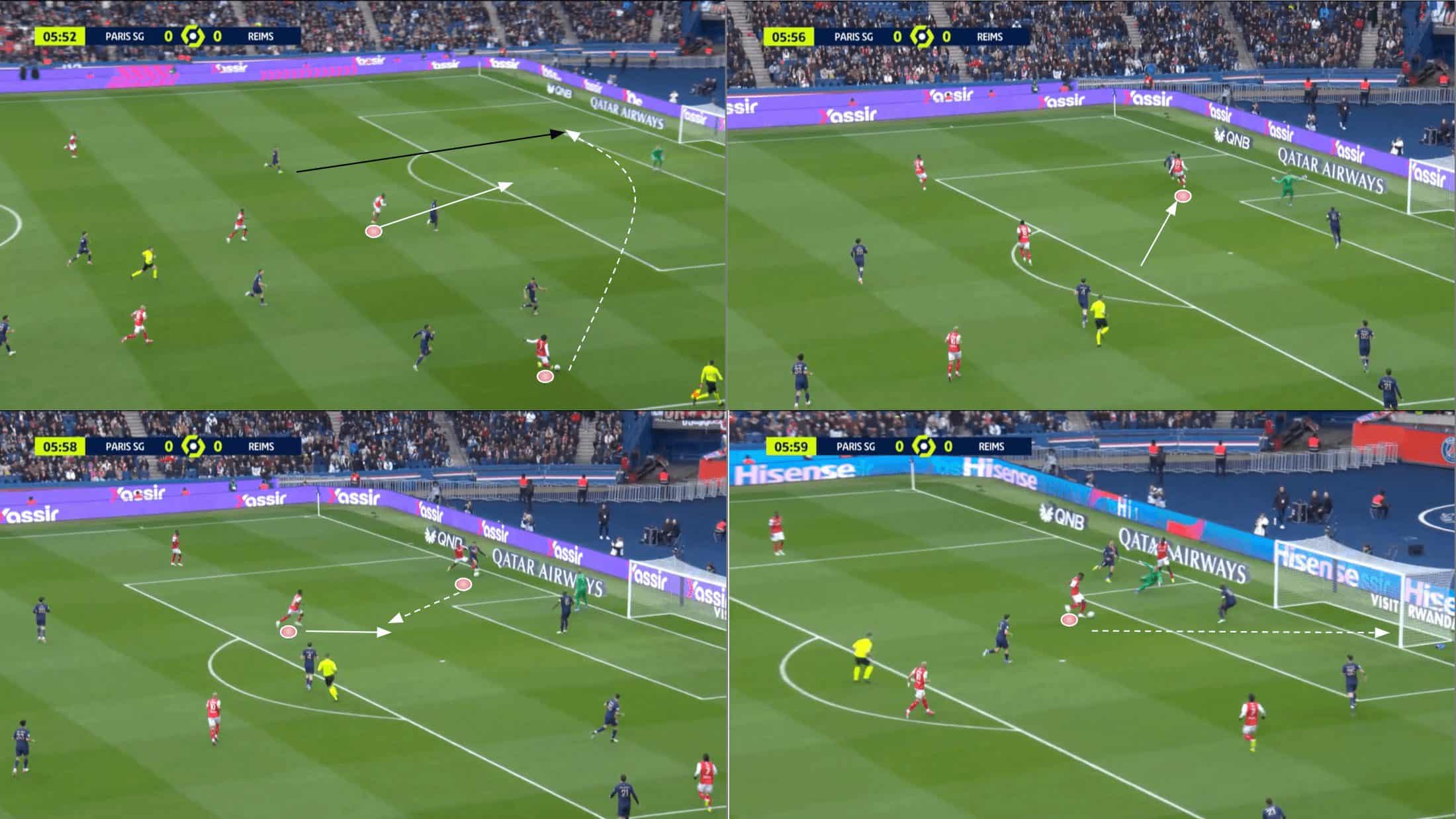
Above, we see Junya Ito playing an early cross for Oumar Diakité to try and get onto the end of, which is ultimately unsuccessful; this allows Achraf Hakimi to claim the ball at the back post.
Although the early cross, in this instance, was perhaps too early, it still had a positive result as Diakité’s persistence in pressing Hakimi helped him force a turnover inside PSG’s box, which led to the ball getting pulled back in the centre for Marshall Munetsi who could convert quite comfortably.
In this case, we see PSG getting caught in possession in a very dangerous position, allowing Reims to steal the ball back and fire it home.
This resulted from the early cross, which helped Reims pile pressure on PSG in an advantageous position. PSG are hesitant to clear the ball sometimes, taking too much out of it when no decent options are available to pass out short, like we see here. This can provide their opponents with a bit of a cushion in that they can afford to play the ball in too early, knowing they may still have a chance to force the turnover if they pressure the PSG receiver quickly and early enough, as was the case in figure 11.
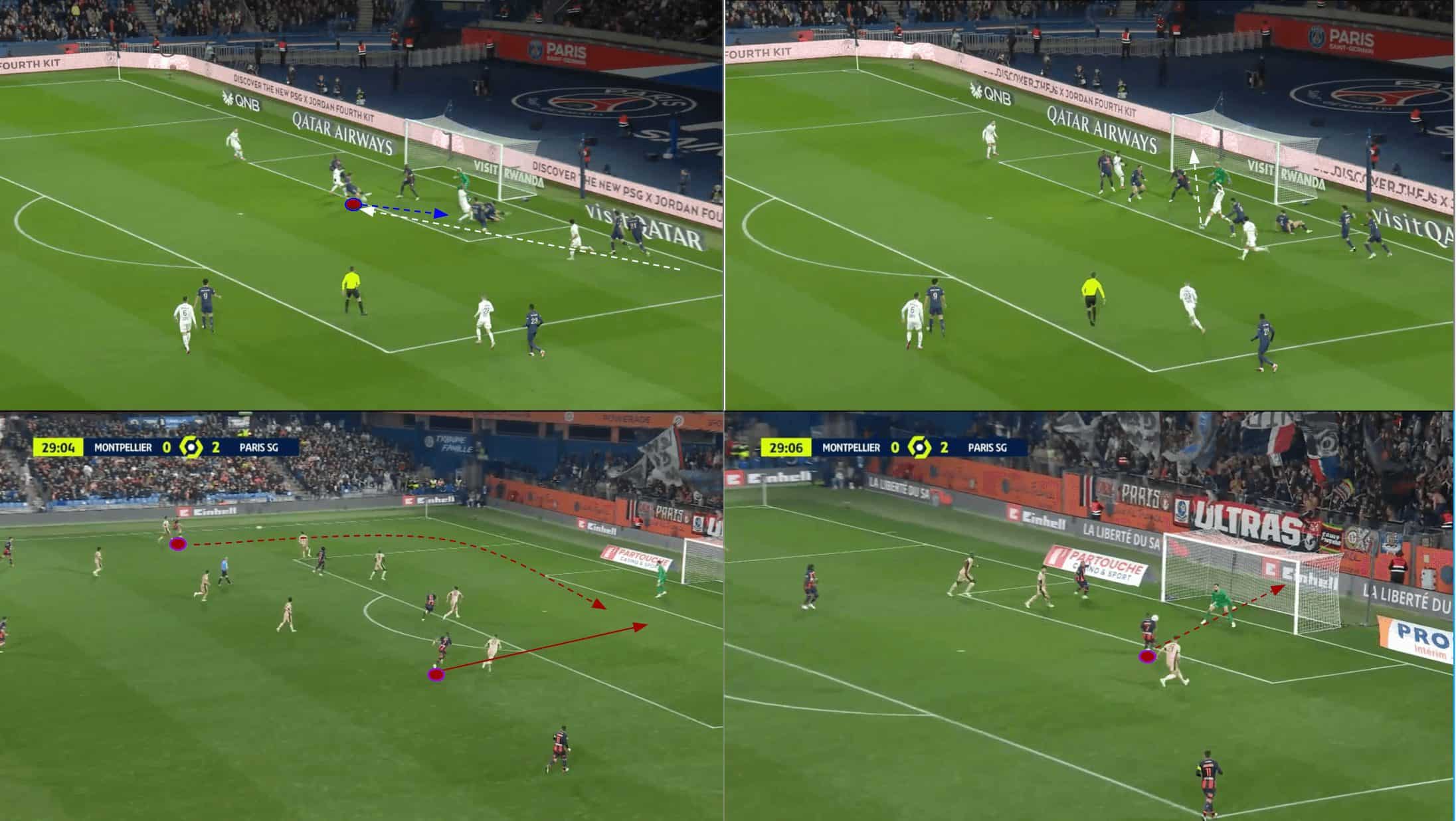
We have another two examples of PSG’s struggles with defending their box in figure 12. Firstly, the top two images show how Lille scored versus Les Parisiens. It was a low drilled cross towards the edge of the six-yard box that PSG failed to deal with effectively as the defender tried to control it with a view to carrying it or placing a pass away rather than clearing it from danger. The result was that the ball was deflected back towards Yusuf Yazıcı, who was able to score, putting Lille up by a goal.
This hesitance to clear the ball must be picked up on and exploited by future opponents, including Marseille, as it’s where teams can gain an edge and ask questions of PSG.
In the bottom two images, Montpellier sends a cross in, and Lucas Hernández fails to track the runner, who ends up with a free shot from point-blank range. At times this season, we’ve seen some poor marking in PSG’s backline also contribute to vulnerability from crosses and early balls forward, as we see in this case — another issue for Marseille to try and take advantage of in Le Classique.
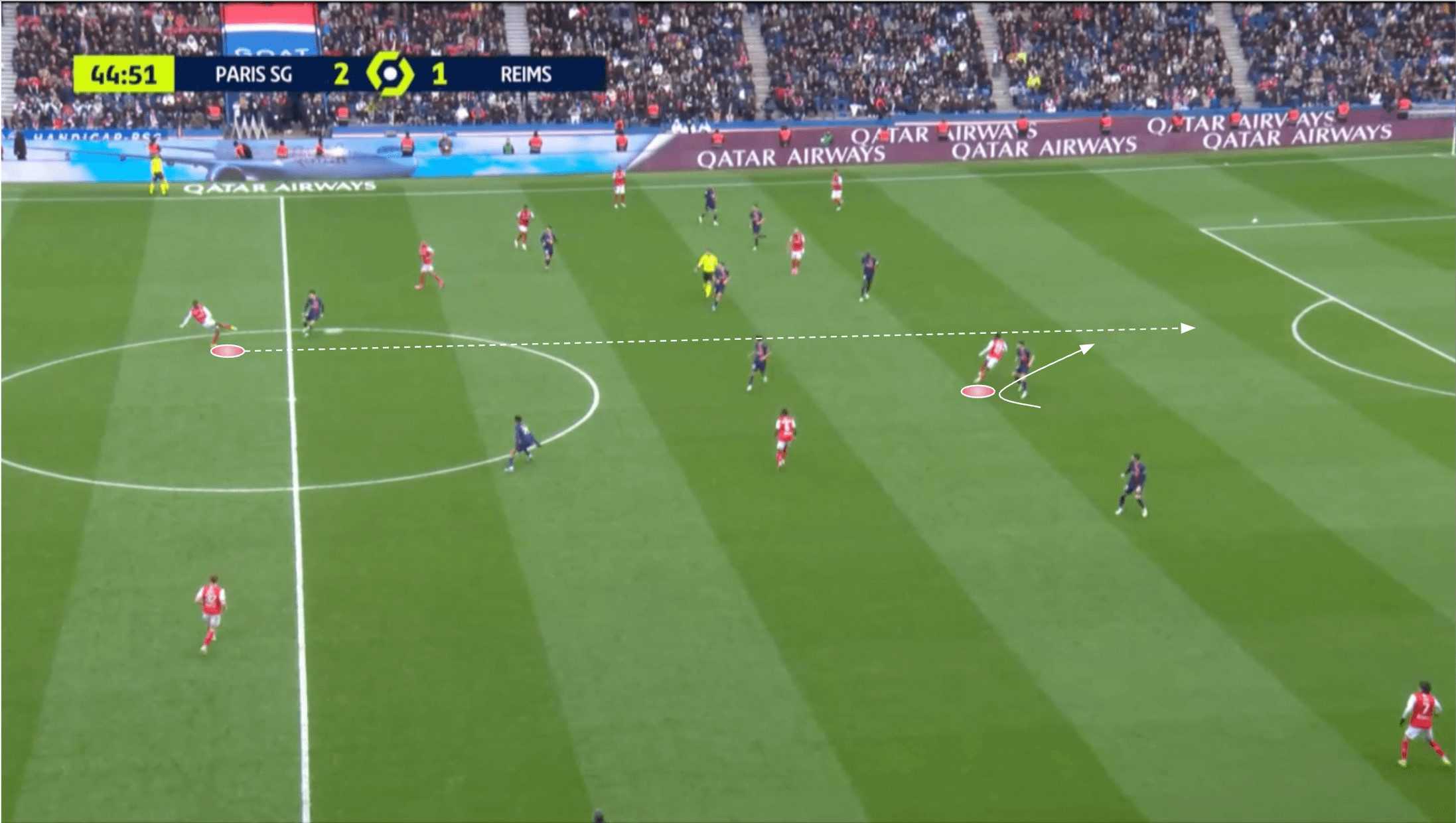
A progressive pass from the backline all the way through to the striker was the catalyst for Reims’ second goal versus PSG. Diakité exploited the square body shape of Lucas Beraldo with an excellently curved run around him and in behind the backline, timed perfectly to match the ball from right centre-back Emmanuel Agbadou.
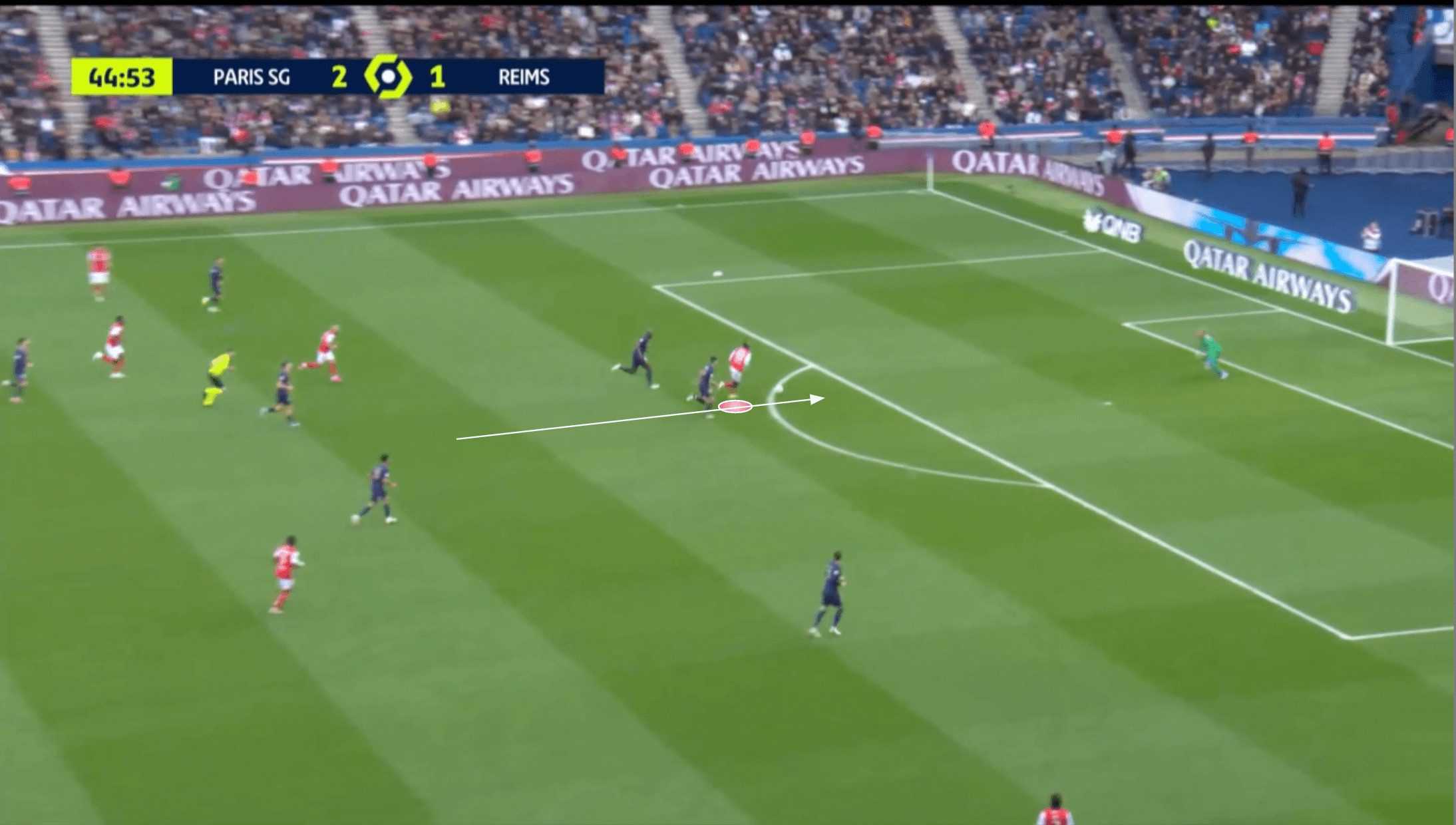
Beraldo should’ve had a side-on body position to deal with this ball in behind but wasn’t prepared. The result was that it took him too long to turn. He lost his man, and Diakité carried it towards Keylor Navas in goal, slotting it past him to tie Reims level at 2-2.
Marseille should see this example as something to replicate when they face PSG. Les Parisiens’ backline has vulnerabilities that can be exploited, which Reims really highlighted in a big way.
Conclusion
To conclude this tactical preview, we aren’t saying Marseille will beat PSG or even get a draw from them — Les Parisiens are undoubtedly the strongest team in Ligue 1 this term with 17 wins and just one loss in 26 games thus far, so the visitors will, in all likelihood, come away with the win in this one.
However, Marseille have to be up for the challenge of pulling off the upset, especially given the intense nature of the historical rivalry between these two clubs.
In preparation for the game, we believe they must focus on the three areas we’ve dissected above if they are to have a chance of getting their desired result. Recent difficult fixtures for Les Parisiens have highlighted weaknesses that can be exploited in their tactics and individual players’ skill sets; if Marseille prepares well and executes their plans well on the day, the result is very much there to be taken.





Comments